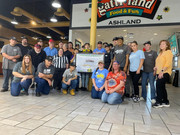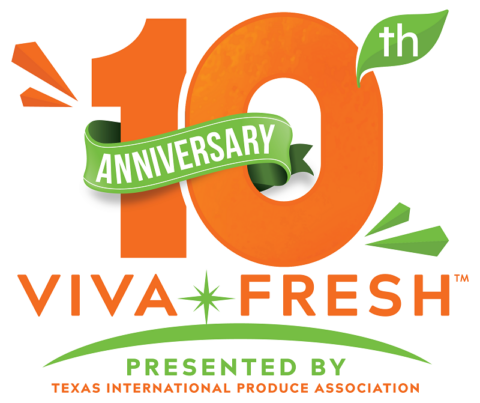
Sometimes the most powerful changes in the food and beverage industry come from the simplest questions. When 17-year-old Lexi Mondary asked her boss at Ashland GattiTown if they could donate leftover pizzas to help people in need, she had no idea that her curiosity would transform her workplace into a community champion, earning the restaurant recognition as a 2024 “Hunger Hero” by Facing Hunger Food Bank.
This remarkable story demonstrates how young employees can drive meaningful change in restaurant operations while creating lasting community impact: a lesson that food and beverage managers and hospitality leaders nationwide should take note of.
The Power of One Question
Two years ago, Lexi Mondary was just another teenage employee working at GattiTown in Ashland. But unlike many of her peers, she noticed something that troubled her: perfectly good food going to waste while people in her community struggled with hunger. Her simple question to management: “Can we donate these pizzas?”: sparked an initiative that would grow far beyond anyone’s expectations.

This story resonates particularly well in today’s food service industry, where sustainable food practices and community engagement have become critical differentiators for successful restaurants. According to industry data, food waste costs the average restaurant thousands of dollars annually, while simultaneously representing missed opportunities for community impact.
From Simple Idea to Community Champion
What started as a teenager’s compassionate observation has evolved into a comprehensive food donation program that showcases best practices in food and beverage sustainability. GattiTown’s commitment to Lexi’s vision has produced impressive results that any food and beverage director would be proud to report.
In 2024 alone, Ashland GattiTown donated over 10,000 pounds of food: equivalent to more than 8,500 meals: to neighbors facing food insecurity. But the impact extends even further: the restaurant now supports 31 local food banks across their service area, creating a network of assistance that reaches multiple communities.
These numbers represent more than just impressive statistics for food and beverage management: they demonstrate how restaurant marketing can authentically connect with community values while addressing real social needs.
The Ripple Effect of Employee Empowerment
Lexi’s story highlights a crucial lesson for hospitality managers: empowering young employees to voice their ideas can unlock innovative solutions that benefit both business operations and community relationships. In an industry where employee turnover remains high, particularly among younger workers, creating environments where staff feel heard and valued can significantly impact retention and job satisfaction.

The food and beverage industry has increasingly recognized that engaged employees often generate the most creative approaches to operational challenges. When foodservice executives create cultures that welcome input from all team members: regardless of age or position: they often discover solutions that senior management might overlook.
Implementing Community Impact Programs: A Guide for Food and Beverage Companies
For restaurant owners and food and beverage managers looking to replicate GattiTown’s success, the model provides a clear framework that can be adapted across different concepts and markets.
Start with Employee Engagement
The foundation of successful community programs often lies in listening to frontline staff. Food and beverage services benefit when managers regularly solicit input from employees who directly observe daily operations. These team members often identify opportunities for improvement or community connection that leadership might miss.
Establish Clear Donation Protocols
Food safety trends emphasize the importance of maintaining proper protocols when donating prepared foods. Successful programs require coordination with local health departments and food banks to ensure all donated items meet safety standards. This process, while initially complex, becomes routine once systems are established.
Build Strategic Partnerships
GattiTown’s expansion to 31 food bank partnerships didn’t happen overnight. Food and beverage companies should start with one or two local organizations, establish reliable processes, then gradually expand their network. This approach allows for quality control while building sustainable relationships with community partners.
Measure and Communicate Impact
Tracking donations by weight and meal equivalents provides concrete data that benefits both internal reporting and external marketing efforts. Food and beverage industry professionals increasingly recognize that measurable community impact enhances brand reputation and employee pride.
The Business Case for Community Engagement
Beyond the obvious humanitarian benefits, programs like GattiTown’s offer tangible business advantages that food and beverage management should consider. Community engagement initiatives often generate positive publicity, strengthen local brand recognition, and create emotional connections with customers who value socially responsible businesses.
Local food sourcing and community support have become significant factors in consumer dining decisions. When restaurants demonstrate authentic commitment to their communities, they often see increased customer loyalty and positive word-of-mouth marketing that traditional advertising cannot replicate.
Lessons for the Hospitality Industry
The GattiTown story offers several key takeaways for hospitality technology implementation and operational strategy:
Listen to All Voices: Age and position don’t determine the value of ideas. Creating systems for employee input often yields innovative solutions.
Start Small, Scale Thoughtfully: Major community impact programs can begin with simple initiatives. Success comes from consistent execution rather than ambitious launches.
Document and Share Success: Measuring impact provides data for continuous improvement and creates compelling narratives for marketing and employee engagement.
Integrate with Business Operations: The most successful community programs become part of routine operations rather than additional burdens on staff.
The Future of Community-Conscious Dining
As food and beverage trends continue emphasizing sustainability and social responsibility, stories like Lexi’s represent the future of successful restaurant operations. Younger consumers increasingly choose brands that align with their values, making community engagement not just good citizenship but smart business strategy.
Food and beverage companies that embrace this shift: particularly by empowering employees to drive community initiatives: position themselves advantageously in competitive markets where authentic brand connections matter more than traditional advertising approaches.
Taking Action in Your Operation
For food and beverage directors and procurement directors reading this story, the question isn’t whether community engagement makes sense: it’s how quickly you can implement similar programs in your own operations.
Start by asking your team the same question Lexi asked: “How can we better serve our community?” Listen carefully to the answers, particularly from younger employees who often see opportunities that experience might overlook.
The recognition GattiTown received as a “Hunger Hero” represents more than an award: it demonstrates how simple questions from engaged employees can transform business operations while creating meaningful community impact.
What question might one of your team members be waiting to ask?
Written by Michael Politz, Author of Guide to Restaurant Success: The Proven Process for Starting Any Restaurant Business From Scratch to Success (ISBN: 978-1-119-66896-1), Founder of Food & Beverage Magazine, the leading online magazine and resource in the industry. Designer of the Bluetooth logo and recognized in Entrepreneur Magazine’s “Top 40 Under 40” for founding American Wholesale Floral. Politz is also the founder of the Proof Awards and the CPG Awards and a partner in numerous consumer brands across the food and beverage sector.







